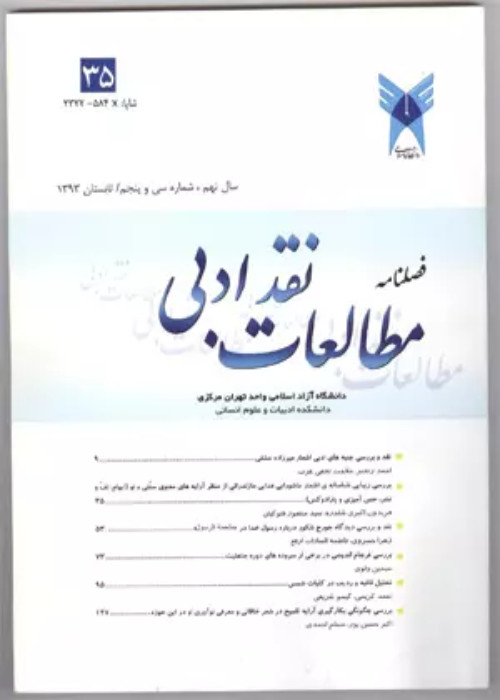The migration of Iranian Shiites to the Deccan Peninsula and the spread of the Persian language
Author(s):
Article Type:
Research/Original Article (بدون رتبه معتبر)
Abstract:
The land of Deccan in South India has attracted attention of many Muslims since the first centuries of the rise and spread of Islam, and groups of Muslim merchants and Sufis entered this region for the purpose of trade and also to propagate Islam. The migration of these people had many consequences in social, economic, political, cultural and religious fields in Deccan. But it took a long time like several centuries for Deccan to be conquered by Muslims. From the end of the fourth century, at the same time as conquests of the Ghaznavids in India, not only Islam; Rather, Persian culture, art, architecture and language became popular in that land. This research aims to answer question of causes and factors of Iranian Shia migration to the Deccan region by using historical research methods that are based on description and analysis. And what has been the expansion of the Persian language? The findings of the present research show that roots of Shia religion, which were established during Bahmani era, continued after their extinction and during time of their successors, namely Qutb Shahian, Nizam Shahian and Adel Shahian, they also introduced the Shia religion to announced the official religion of their government. Their support for Shiite immigrants who migrated from Iran and Arab lands to the Deccan led to the spread of the Shiite religion, spread of Iranian-Islamic culture and civilization in the Deccan. One of the most important results of the presence and role of Shia immigrants in the politics of Deccan was their social and cultural influence. As cultural missionaries, by establishing educational institutions and using the presence of scholars, they created a suitable atmosphere for literary support. They wrote, brought the Persian language to its peak and marked the growth and prosperity of the Iranian-Islamic culture, in addition to being the official and administrative language, the common people also used Persian in their daily conversations. And it was considered a sign of honor. Also, this language was the favorite of Muslim sultans and their friendship and politeness turned their court into a gathering place for scholars and writers.
Keywords:
Language:
Persian
Published:
Journal of Literary Criticism Studies, Volume:17 Issue: 52, 2022
Pages:
195 to 218
magiran.com/p2604835
دانلود و مطالعه متن این مقاله با یکی از روشهای زیر امکان پذیر است:
اشتراک شخصی
با عضویت و پرداخت آنلاین حق اشتراک یکساله به مبلغ 1,390,000ريال میتوانید 70 عنوان مطلب دانلود کنید!
اشتراک سازمانی
به کتابخانه دانشگاه یا محل کار خود پیشنهاد کنید تا اشتراک سازمانی این پایگاه را برای دسترسی نامحدود همه کاربران به متن مطالب تهیه نمایند!
توجه!
- حق عضویت دریافتی صرف حمایت از نشریات عضو و نگهداری، تکمیل و توسعه مگیران میشود.
- پرداخت حق اشتراک و دانلود مقالات اجازه بازنشر آن در سایر رسانههای چاپی و دیجیتال را به کاربر نمیدهد.
In order to view content subscription is required
Personal subscription
Subscribe magiran.com for 70 € euros via PayPal and download 70 articles during a year.
Organization subscription
Please contact us to subscribe your university or library for unlimited access!


